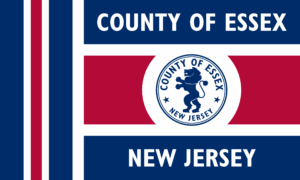Essex County, NJ: Black Power, Immigrant Roots, and the County That Keeps Setting the Tone
Stretching from the dense streets of Newark to the leafy suburbs of Livingston and Montclair, Essex County, New Jerseyis a county of contrasts, coalitions, and creation. It’s where the Great Migration collided with European immigration, where revolution sparked in classrooms and courthouses, and where Black and brown communities have built—and continue to build—legacies that shape the entire state. Essex is culture. Essex is conflict. Essex is community. And Essex is still writing the next chapter.
Origin and History
Essex County’s story is about land, labor, and layers of power.
- Lenape Land: Before colonization, the area now known as Essex was home to the Lenape people—whose villages, footpaths, and river routes shaped the region long before city plans.
- Colonial Formation: Essex County was formed in 1683 as one of New Jersey’s original four counties. Newark, its largest city, was settled by Puritans in 1666 and quickly became a center of trade, printing, and religion.
- Industrial Epicenter: In the 19th and early 20th centuries, Essex became an industrial powerhouse—with Newark leading in leather, textiles, and shipping.
- Great Migration & Civil Rights: Between 1910 and 1970, thousands of Black families migrated to Essex County from the South, joining Caribbean immigrants and working-class whites to create vibrant but segregated communities.
- Rebellion & Rebuilding: The 1967 Newark Rebellion marked a turning point—highlighting state violence, racial injustice, and sparking a wave of Black-led political and cultural power that continues to this day.
Demographics
Essex County is one of the most racially and ethnically diverse counties in the state—and the nation.
- Population: Approx. 863,000 residents (2020 U.S. Census)
- Cultural Composition: ~41% Black/African American, ~33% white, ~24% Latinx (predominantly Puerto Rican, Dominican, and Central American), ~6% Asian, with large Haitian, West African, Portuguese, and Brazilian communities.
- Languages Spoken: English, Spanish, Haitian Creole, Portuguese, Yoruba, French, Arabic, and Mandarin are all part of Essex’s daily rhythm.
- Immigrant Power: Over 30% of residents are foreign-born, and immigrant-owned businesses are a vital part of the county’s economic engine.
Geography and Government
Essex County is diverse not just demographically—but geographically and politically.
- Size: 129 square miles, with 22 municipalities—including cities like Newark, East Orange, and Orange; and suburbs like Montclair, Maplewood, West Orange, and Livingston.
- County Seat: Newark (also the state’s largest city)
- Governing Structure: Led by an elected County Executive and Board of County Commissioners. The county government oversees parks, elections, public health, and the Essex County Correctional Facility.
Where We Thrive
Essex County thrives in resistance, cultural production, academic rigor, and movement leadership.
- Education & HBCU Legacy: Home to NJIT, Rutgers-Newark, Seton Hall Law, and nearby Montclair State. Essex is also home to the New Jersey Orators, Black Scholars programs, and dozens of grassroots tutoring and mentorship spaces.
- Arts & Culture: From Newark Museum of Art to Brick City poets, from Montclair Film Festival to East Orange beatmakers, Essex County is a national cultural wellspring.
- Black Political Leadership: Essex has long been a hub for Black elected officials, judges, clergy, and movement leaders—often leading statewide on justice reform, tenant rights, and education equity.
- Faith & Organizing: Houses of worship double as civic spaces—from mosque-run food pantries in Irvington to liberation theology churches in Newark and Orange.
Fun Facts and Local Gems
- Newark Symphony Hall: A cultural icon and Black-led arts center, home to music, dance, and activism since the 1920s.
- South Mountain Reservation: A sprawling 2,000-acre park system for hiking, family gatherings, and reflection—connecting Maplewood, Millburn, and West Orange.
- Weequahic High School: Alma mater of author Philip Roth and generations of Black scholars, athletes, and artists.
- Ironbound District: A culinary and cultural gem in Newark known for Portuguese, Brazilian, and Ecuadorian communities.
Challenges and Change
Essex is powerful—but not immune to systemic injustice.
- Economic Inequality: The wealth gap between towns like Livingston and Newark is vast—with housing segregation and school funding disparities rooted in racialized zoning.
- School System Fragmentation: With over 20 districts, students in wealthier towns often receive vastly different resources than those in Newark, Irvington, or East Orange.
- Policing & Incarceration: Essex County operates a controversial jail used for both local inmates and ICE detainees. Grassroots groups have led major campaigns to end the ICE contract and demand broader accountability.
- Gentrification: Neighborhoods in Newark, East Orange, and Montclair are facing rapid development, displacement, and culture shifts that challenge long-time Black and immigrant communities.
Community Voices
“Essex is deep. We’re not just activists or artists—we’re both. We write, we march, we teach, we build. And we’ve been doing it before anybody handed us a mic.”
— Raquel M., third-generation Newark resident and community archivist
Why Essex County Matters
Essex County is the cultural engine of North Jersey. It’s where revolutions started and where youth are still organizing walkouts, murals, voter drives, and healing circles. It’s where immigrants built entire neighborhoods and where Black educators created institutions of pride. And it’s where the future of New Jersey—racially, politically, spiritually—is being shaped every day.
HFYC uplifts Essex County because it is the blueprint for what real, rooted, community-first progress can look like—if we listen to the people who’ve always led it.
Call to Action
Live in Essex County? Know a teacher, parent, student activist, muralist, vendor, faith leader, or movement elder shaping your town?
Let us help tell their story.
Submit a feature, nominate a changemaker, or reflect on what Essex County means to you—from the City Hall steps to the park bench.
